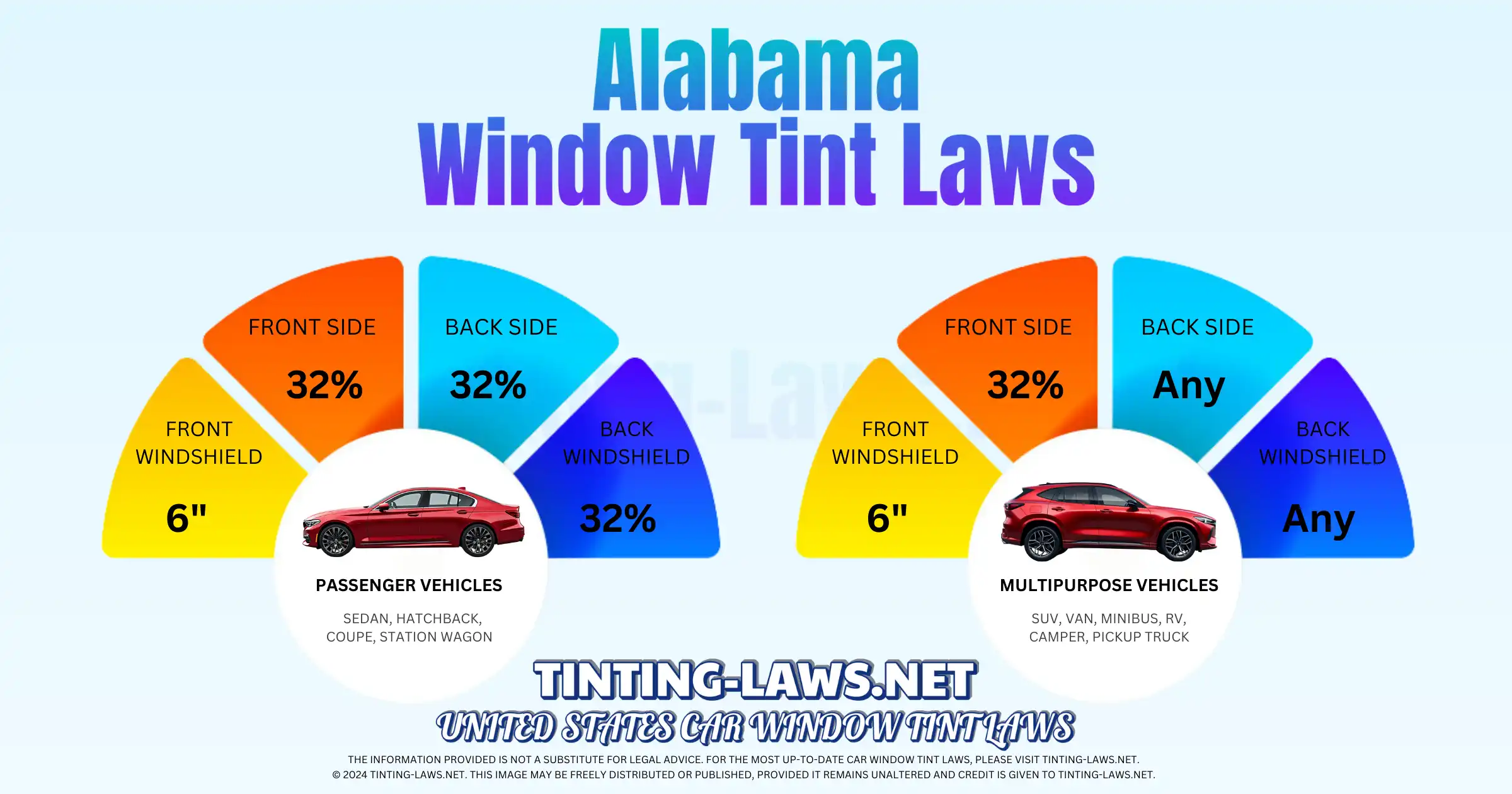Comprehensive Guide to Alabama Car Window Tinting Laws
Understanding the window tinting regulations in Alabama is essential to ensure compliance and avoid fines.
Enacted in 1996, Alabama’s car window tinting laws specify the permissible darkness and reflectiveness of window films for vehicles.
In this guide, you’ll find all the details about Alabama’s window tinting laws, including the rules for sedans, SUVs, and vans, along with additional regulations and tips.
Window Tint Darkness in Alabama
The amount of light that passes through your car windows is measured as VLT (Visible Light Transmission). Alabama’s VLT requirements differ based on vehicle type (sedans vs. SUVs/vans).
Tint Darkness Requirements for Sedans
- Windshield: Non-reflective tint is allowed on the top 6 inches.
- Front Side Windows: Must allow more than 32% of light to pass through.
- Back Side Windows: Must allow more than 32% of light to pass through.
- Rear Window: Must allow more than 32% of light to pass through.
Tint Darkness Requirements for SUVs and Vans
- Windshield: Non-reflective tint is allowed on the top 6 inches.
- Front Side Windows: Must allow more than 32% of light to pass through.
- Back Side Windows: Any darkness can be used.
- Rear Window: Any darkness can be used.

Window Tint Reflectiveness in Alabama
Reflective window tint helps reduce glare and heat but must comply with Alabama’s regulations.
Tint Reflectiveness for Sedans
- Front Side Windows: Must not be more than 20% reflective.
- Back Side Windows: Must not be more than 20% reflective.
Tint Reflectiveness for SUVs and Vans
- Front Side Windows: Must not be more than 20% reflective.
- Back Side Windows: Must not be more than 20% reflective.
Additional Alabama Window Tint Regulations
Alabama law includes several other rules that drivers need to follow:
- Side Mirrors: No restrictions.
- Restricted Colors: All tint colors are permitted; no bans.
- Film Certification: Film manufacturers must certify their products for sale in Alabama. Always verify with your dealer that certified films are used.
- Stickers: A compliance sticker identifying legal tint is required between the tint film and glass on each tinted window.
- Medical Exemptions: Alabama allows medical exemptions for special window tinting. For detailed information about the specific requirements and conditions, refer to Alabama state law.
- Penalties: For a first conviction, the maximum penalty is $100 and/or up to 10 days in jail. A second conviction within a year carries a maximum penalty of $200 and/or up to 30 days in jail. For a third and subsequent offense within a year, the penalty increases to a maximum of $500 and/or up to 3 months in jail.
Tips for Compliance
- Alabama’s tinting laws may vary slightly by county. Always confirm with your local DMV or law enforcement agency to avoid misunderstandings.
- Ensure your window tint installation meets both the state requirements and manufacturer certifications.
By staying informed about Alabama’s window tinting regulations, you can enjoy enhanced comfort and privacy while adhering to the law.
For more details, consult local authorities or professional window tinting services.